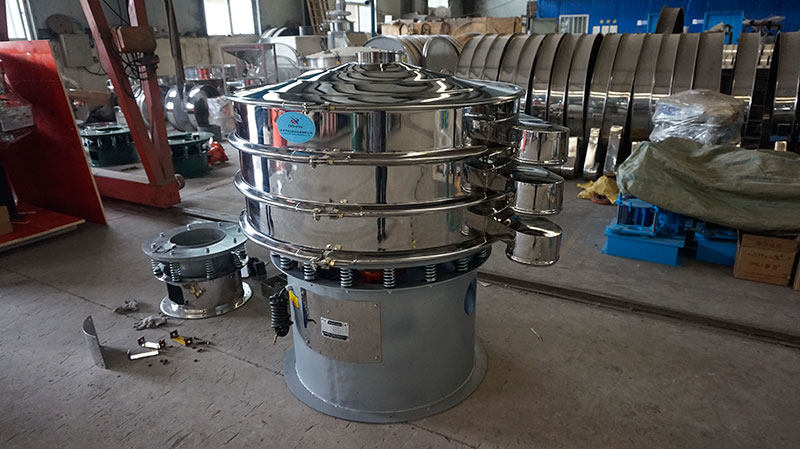
Fresh cassava is cleaned and removed—transported to a special crusher for crushing—the pulverized pulp is further dehydrated—conveyed to drying equipment—dried materials are screened by a vibrating sieve—finished product packaging, the main function of Tapioca starch vibrating sieve is to The thin starch puree after disintegration and stirring needs to be sieved to separate the starch milk from the fiber. At the same time, the starch milk needs to be sieved to remove the fine residue, and the fiber needs to be subjected to detergent to recover the starch, and the purpose of separating and purifying the starch is achieved through sieving.

The wet processing technology of cassava starch includes drum cleaning, secondary crushing, thick stock screening, countercurrent washing, oxidation-reduction bleaching (bleaching is only required when fresh cassava is used as raw material), cyclone sand removal, thick stock separation, overflow Slurry dehydration, one-stage negative pressure pulse air drying.
The dried cassava starch is sieved by vibrating sieve to meet the needs of different industries. The sieved cassava flour will be transported to the packaging machine for packaging, and most of the finished products are between 200-1000 mesh.

Tapioca starch enters the equipment through the feed port. According to the screening requirements of different materials, the materials pass through 1-5 layers of sieving layers using metal woven screens with different meshes. The cleaning device (bouncing ball made of silica gel) continuously hits the screen through frequency vibration, so that the upper layer of the screen can be screened smoothly through the screen, and effectively solves the problem of screen blocking. Materials with different meshes pass through the corresponding meshes of each layer After the sieve, it is discharged at the outlet of each layer, and finally achieves the purpose of screening and removing impurities or filtering and grading.
1. Improve product quality by eliminating impurities and agglomerates in cassava starch.
2. Ordinary vibrating sieve cannot achieve high-precision screening (tapioca starch fineness greater than 99.5% is a first-class product), and often clogs the screen. Our tapioca starch vibrating sieve is equipped with an ultrasonic system to prevent mesh clogging, and the separation accuracy is as low as 20µm (#635 mesh)
3. The screen and screen frame are made of 304 stainless steel, which meets the requirements of the food industry for equipment.
4. There are 8 sizes, which can be installed in any scale of production plants, from small equipment to mass production plants.
| Model |
Screen Diameter (mm) |
Sieving Area (m2) |
Screen Size (mesh) |
Layers |
Power (KW) |
| DHC-400 | 340 | 0.091 | 80-600 | 1~3 | 0.18 |
| DHC-600 | 540 | 0.229 | 0.25 | ||
| DHC-800 | 730 | 0.418 | 0.55 | ||
| DHC-1000 | 900 | 0.636 | 0.75 | ||
| DHC-1200 | 1100 | 0.95 | 1.1 | ||
| DHC-1500 | 1400 | 1.539 | 1.5 | ||
| DHC-1800 | 1700 | 2.269 | 2.2 | ||
| DHC-2000 | 1886 | 2.792 | 2.2 |

For example: In the potato starch industry, a single-layer vibrating sieve with a diameter of 1 meter or 1.5 meters of stainless steel screens such as 60 mesh, 80 mesh, and 100 mesh is commonly used to remove impurities and screen before packaging, and the output is about 2-3.5 tons. every hour
Address:China,Yanjin county forest park gate to the west 1000 meters north road.